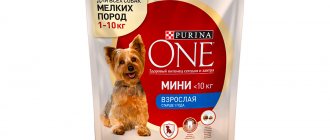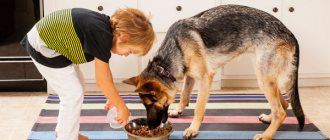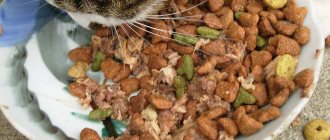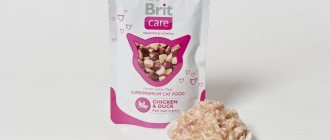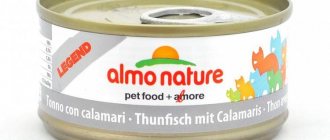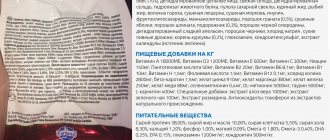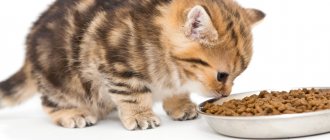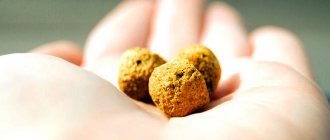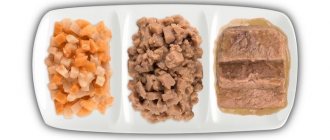Recently, among pet owners, when it comes to industrial food, the topic of classes of cat food is often raised. And the majority, as it turns out, have a very vague idea of the classification of food, limiting themselves to templates from the series - economy class is poison for the animal, premium means good, super-premium is just excellent. Well, if it’s canvas, then wow. What no one can specify. Let's try to understand the issue of the class of cat food: their features and differences.
Economy class
The name of the class of cat food “economy” speaks for itself. These are the most inexpensive, and therefore the lowest quality feeds. Everything is correct and logical. But are they so bad? There are a lot of myths about such food, ranging from the fact that special additives are added there for addiction (after all, supposedly an animal in its right mind will not eat it), ending with the banal excuse that it is poison.
Let's be constructive and face the truth. Economy class cat food is definitely not poison, and no matter how much it wants, the manufacturer cannot add “secret” powders to the food to make it taste attractive and addictive. Information about the contents of the packaging of any product in the Russian Federation is an extremely important responsibility of any manufacturer.
and if any component is found that is not included there, it faces at least a recall of all products, colossal fines, not to mention a hopelessly damaged reputation. After all, the category economy in this sense is always under “special control” of the public in one form or another - just give a reason.
Composition and prices
What about the composition? After all, this is the key question. When producing a complete, balanced diet for cats, the manufacturer always faces a choice between the price of the product and the quality of the product. And speaking about the economy segment, the manufacturer is guided by the following principle:
- Ensure that the food is completely nutritious (that is, by eating only it, the cat will receive all the nutrients necessary for a healthy life)
- Ensure good palatability of the food (after all, if you make food only from corn, not a single cat will eat it)
- Provide an affordable price on the shelf. But we will dwell on the price in more detail.
How can you reduce the price if you look at the composition of the feed?
- Buy cheaper raw materials
- Develop a recipe in which the composition will be complete, but at the same time with a minimum content of “expensive calories” - meat.
- Buy cheaper packaging for feed.
Here lies the answer to why economy class food for cats is really economical. If we talk about the purchase of raw materials, by-products of lower quality are purchased (that is, not the stomach, but ears, for example, or something worse). If we talk about the recipe, then the composition will be dominated by cereals. The same is with packaging, which also has its own significance - after all, its tightness and integrity are extremely important for maintaining the quality of the product.
It is important to understand that one of the serious criteria for assessing the class of food is the cost of the “conditional protein” in the food.
The more of it, the faster the cat eats, the less food is needed. Economy food contains little protein, cats eat worse and require more food on average. Therefore, the savings are in a sense imaginary - if you really approach this issue scrupulously, then you need to take a calculator and consider what is more profitable.
There are also unscrupulous manufacturers who do not care about cats at all and add dyes, flavors, preservatives, etc. to the composition. Read the ingredients - everything is always there.
List of brands
Economy class cat food includes the following brands:
- Kiteket
- Whiskas
- Friskies
- Felix
- Gourmet
These are the most famous representatives of this class. You can also take the price on the shelf as a guide. If a pouch costs less than 20 rubles = consider it an economy price.
Tips for feeding your cat
- Your cat should always have access to fresh drinking water. For example, place a large bowl and change the water in it at least once a day;
- Before feeding your cat any food, carefully read the feeding recommendations on the food package;
- It is best to train your cat to eat twice a day - morning and evening. However, if you are constantly at home, you can introduce three meals a day;
- Every cat has individual tastes and not everyone will like the same food. If your cat is allergic to the selected food, try a different brand of food;
- You should not constantly change the brand of food - it is best to choose once and for all. This way, the animal’s stomach won’t have to constantly adapt to new food.
Premium class
Perhaps there is no point in dwelling on the premium class for cats for a long time. Why? In essence, this is a rather vague class in terms of positioning. Yes, the food seems to be more expensive. Yes, and in advertising they tell us that the food is special, but in essence there are few differences from economy class. But! Of course they are:
- As a rule, there is a wider selection of textures and types of food packaging. This is important, because cats, as you know, for the most part are gourmets and cannot eat the same thing for a long time. We need variety, even in textures.
- There are definitely no preservatives, dyes or other unnecessary “chemicals”.
- As a rule, the composition is better balanced in terms of the ratio of proteins, fats, carbohydrates and other components.
- As a rule, higher quality by-products and a wider range of flavors are used.
List of the most common brands of premium cat food:
- Sheba
- Perfect fit
- Purina one
- Organix
- Prevital
- Dr. Clauder
In the store, as a guide, a premium bag of cat food will cost in the range from 20 to 40 rubles.
Types of cat food
Most reputable brands offer different types of food - the optimal combination of them in the diet will benefit your cat. There are three main types of industrial, ready-to-eat products:
- dry;
- wet (or semi-moist)
- canned food
Types of cat food from one brand may vary
Dry
“Drying” is made from dehydrated meat or fish with various fillers and additives - their set depends on the class of diet. By chewing crispy croquettes or granules, the cat strengthens the dental system and gets rid of plaque, thereby preventing the formation of tartar. Dry food does not spoil for a long time, this is an excellent option for traveling or at an exhibition.
Dry food helps get rid of plaque
Dry food increases the animal's need for water.
Video: composition of dry food
Wet
The humidity of such feeds reaches 35%; Usually these are boiled or steamed pieces of meat in jelly, packaged in pouches - flexible plastic bags designed for one feeding.
Pouch food is very convenient to use
Pauchi contains a lot of moisture in the form of jelly or sauce. The advantage of wet food is a wide variety of flavors, which allows you to enrich your pet’s diet without compromising health. The disadvantages are:
- quite high price;
- inability to store open packaging for a long time - wet food is not stored longer than 12 hours after opening the package;
- lack of prevention of the appearance of tartar - you need to either include dry food in the diet, or carefully monitor the health of your pet’s oral cavity.
The cat gets enough moisture from the food, but water should always be available to it in any case.
Video: about wet cat food
Canned food
Hermetically sealed tin cans may contain:
- the same wet food as in spiders;
- various pates;
- mixes of whole and ground components.
It is also advisable to use the contents of the jar at a time; you can store the leftovers in the refrigerator for several hours - otherwise the food will rot or spoil.
Do not store opened canned food for a long time - it will spoil
Super premium class
Super-premium cat food is the most common food in pet stores in Russia, as well as in professional online stores. Why do sellers pay such increased attention to this class? It's simple - they are expensive, and they are high quality. Which ensures good earnings and grateful customers.
How does this class of cat food compare favorably with premium food? Let's figure it out:
- Super-premium brands often have breed, medical and dietary lines. After all, healthy eating is a top priority in this class.
- The composition uses only the highest quality by-products, a minimum of cereals (or their absence - grain free), an excellent balance of vitamins, minerals and other components and, of course, the absence of preservatives and other “chemicals”.
- The special structure of the granules of dry food is most conveniently suitable for the teeth of whiskers.
- As a rule, the best combination is amount of protein vs price. That is, it is in this category that the food is the most nutritious, and it is quickly enough to saturate cats.
- The best possible packaging.
The most popular brands of super-premium cat food include:
- Royal Canin
- Hills
- Proplan
- Akana
- Origin
- Ekanuba
- Shezir
What class do Acana and Orijen belong to?
Having studied the basic principles of the classification of dry cat food, we can conclude that Acana and Orijen are holistic. However, the manufacturing company Champion Petfoods itself positions its products as “Biologically Appropriate Nutrition”. This is a new patented class of food, which is characterized not only by a large amount of animal protein, but also by the widespread use of fresh meat components (not frozen or dried).
Acana and Orijen are quite rightly classified as Biologically Appropriate, because they contain 75% and 85% meat, respectively. In addition, their production uses the WholePrey principle, which translates as “whole extraction.” In addition to animal muscle meat, cartilage, bones and entrails, which are rich in many useful substances, are added to the feed. After all, in the event of a successful hunt, cats eat the whole carcass of their prey, rather than cutting it up into its component parts.
All this brings biologically appropriate feed closer to the nutrition of animals in their natural habitat and allows the use of vitamin and mineral supplements to be minimized.
Holistic class
So, the most mysterious class of cat food of all is holistic. Everyone talks about it with anticipation, but few people can clearly find real, super-premium cat food. This is not because it’s complicated, but rather because there are actually no significant differences, except for the price. Main differences from super-premium cat foods:
- Detailed display of the composition - with a clear name of the source of protein, carbohydrates, fats. In practice, it will be clearly written on the pack which animal this or that offal is from, this also applies to the carbohydrate and fat components.
- Exclusion of gluten from the composition. (although many even economy feeds don’t have it).
- Price, they cost an order of magnitude more.
Which manufacturers produce holistic food for cats? Evo, Innova, Acana, Felidae, Eagle Pack Holistic.
What to look for when choosing food
Be sure to study the composition. The fewer impurities, dyes, preservatives and grain/soy additives, the better. The closer to the beginning of the list the name of the product, the higher its content in this food. What else should you pay attention to when choosing food?
| Look up the acronym AAFCO | It indicates that this product has not only passed the necessary tests of the American Feed Control Association, but also that the nutrients in this product are balanced. That is, the use of such food will provide your pet with everything it needs without “supplementary feeding” with natural food. |
| Protein (its nature) | If you see the word “protein” in the ingredients, then look to see if the manufacturer explains what kind of protein they use. And also whether there are percentages of its content. Conscientious manufacturers, who care not only about profit, but also about the buyers themselves, will always indicate the percentage content and type of this protein. |
| Feed quantity | Find out how much food you should give your pet. The lower this number, the better quality product you have in your hands. The high nutritional value of the food will provide your pet with the necessary energy. |
| Compound | Avoid products that contain bone meal, large amounts of grains or soy (they should not exceed half of the diet), many different dyes and preservatives. Give preference to those foods that contain not only vitamins (in particular E and C), but also liver and fish. This way you will provide your pet with iron and phosphorus, which are necessary for its bone and circulatory systems. |
| Best before date | Pay attention to expiration dates, as well as where and how the food was stored. |

